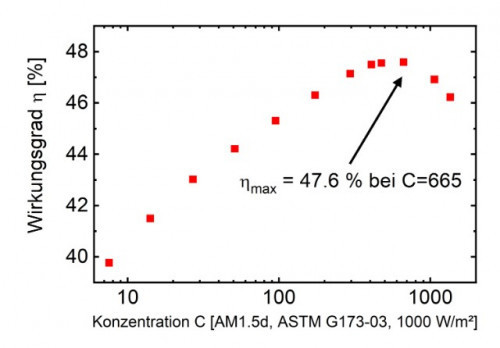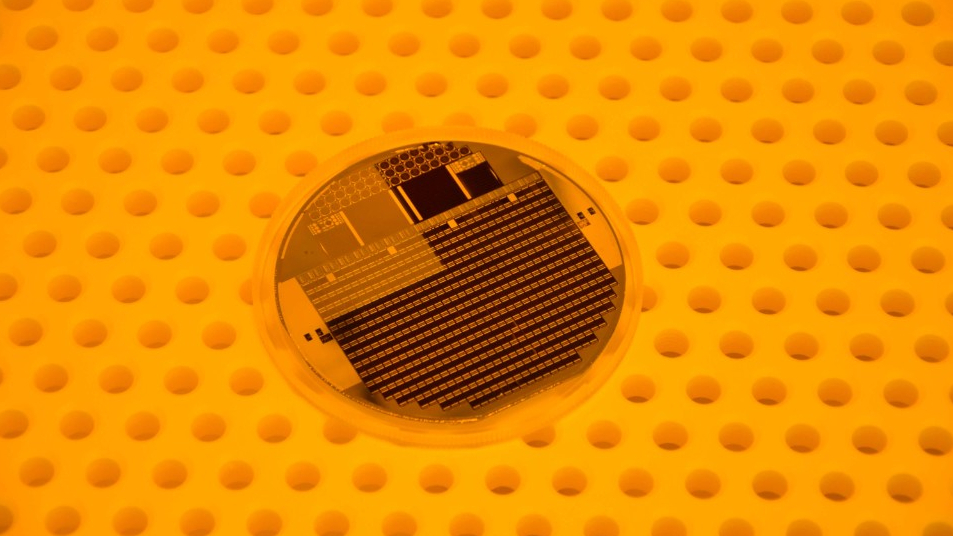The Fraunhofer Institute for Solar Energy Systems ISE in Freiburg has succeeded in increasing the efficiency of the best quadruple solar cell to date from 46.1 % to 47.6 % with an anti-reflective coating - with the help of concentrator technology that enables a 665-fold concentration of sunlight. There is currently no more efficient solar cell. It was presented at the 2nd International TandemPV Workshop at ISE in early June 2022.
For two years, ISE has been working on the '50Prozent' project, funded by the German Federal Ministry of Economics and Climate Protection (BMWK). The goal is a solar cell with 50 % efficiency. To achieve this, each layer of the multi-junction solar cells is being further optimized, and improvements are being made to the metal contacts and improved anti-reflective layers are being incorporated. The researchers are also focusing on concentrated sunlight.
version presented represents an initial breakthrough. "We are thrilled with this result, which was achieved just one year after the opening of our new Center for High Efficiency Solar Cells," says Dr. Frank Dimroth, Head of Department for III-V Photovoltaics and Concentrator Technology at Fraunhofer ISE.
 The efficiency increases up to a concentration factor of 665
The efficiency increases up to a concentration factor of 665
The layer structure of the new solar cell was developed in 2016 with the French company Soitec AG. It is an upper tandem solar cell made of gallium indium phosphide (GaInP) and aluminum gallium arsenide (AlGaAs), which was bonded by Soitec to a lower tandem solar cell made of gallium indium arsenide phosphide (GaInAsP) and gallium indium arsenide (GaInAs).
The layers were provided with improved contacts and four-layer anti-reflection at ISE. This reduces resistance losses as well as reflection on the front of the cell, which is sensitive in the spectral range 300 to 1780 nm. Silicon solar cells only absorb sunlight up to 1200 nm. Multi-junction solar cells made from III-V compound semiconductors are among the most efficient solar cells when the sunlight is additionally concentrated onto components measuring just a few square millimeters. "Applications include concentrator photovoltaic systems that contribute to efficient energy generation," says Dr. Stefan Glunz, Head of Photovoltaics Research at ISE. "Using tandem photovoltaics, it is possible to achieve a reduction in solar power costs."


